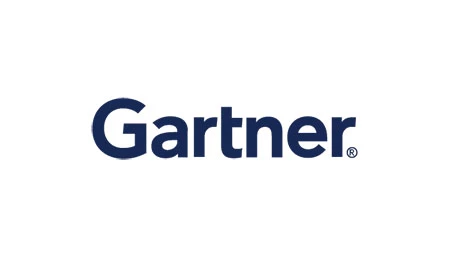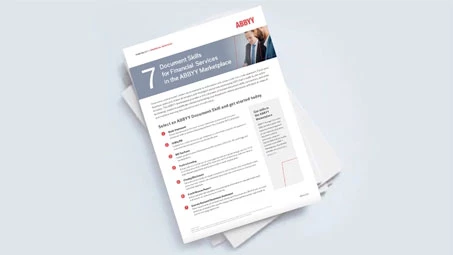
How Document AI Is Curing Prescription Medication Workflows
by Max Vermeir, Senior Director, AI Strategy
AI that can perform surgery, detect cancer, or predict patient outcomes are the dramatic stories that fuel press releases and make healthcare headlines. Yet often, the uses of AI that make the biggest difference are the least glamorous—like automating how prescription data enters the system, whether for patients communicating with physicians, or submitting health insurance claims.
Think about it: Every prescription printed on a pill bottle or receipt submitted for reimbursement has to be entered into a database. Now imagine the time it takes to manually enter all that information when 6.7 billion prescriptions are filled in the U.S. each year.
Considering those numbers, automating prescription-related data entry could have much bigger impacts on patient care and satisfaction than many of the AI breakthroughs grabbing headlines today.
This is where, behind the scenes, ABBYY Document AI is now smartly reengineering how the healthcare industry processes prescription information.
Smarter house calls with Wipro’s prescription app
One of the most time-consuming tasks for clinicians doing in-home visits is logging the medications a patient is taking. This job often requires reading the tiny print on pill bottles and typing out drug names and dosages on small digital keyboards. As anyone who's ever misspelled words in a text can understand, manual data entry on a handheld device often leads to mistakes. But in healthcare, even minor typos can lead to major consequences.
Wipro, a global technology services company, decided to make this whole process faster, easier, and more accurate with SmartRX. A mobile-friendly web app designed specifically for field clinicians, SmartRX uses ABBYY Document AI with its optical character recognition (OCR) technology to extract prescription details in real time.
With SmartRX, clinicians can simply snap a photo of the pill bottle with their smartphone or tablet. Then ABBYY Document AI automatically extracts the drug name, dosage, and instructions.
The technology is built for real-world conditions. SmartRX works on text that is on a curved surface, partially obscured, or printed in tough-to-read fonts. The app also works across devices and doesn’t require extra training or hardware. Clinicians can simply use the devices they already carry in their pocket.
SmartRX’s capabilities may seem undramatic, but can make a big difference for many, many clients, considering the millions of house calls taking place each year in the U.S. alone. Clinicians can spend less time typing and correcting errors, more time on patient care, and have higher-quality medical records.
Clearing the claims backlog with Formtran’s receipt solution
Insurers face a different but equally frustrating problem when it comes to prescriptions: processing the piles of pharmacy receipts patients submit for reimbursement. These receipts come in all kinds of formats—handwritten, taped together, in faded ink—and typically require individual manual review to pick out the relevant data.
Formtran, a longtime ABBYY partner, decided to automate this painstaking process, using ABBYY’s Document AI platform to extract information from even the most disorganized receipts.
Unlike traditional document processing systems that require precise templates, Formtran’s solution uses contextual logic to find and extract the right data. The system works by combining dozens of specialized AI models trained to recognize handprint, barcode, machine print, and different printer types well enough to identify and pull out drug names, national drug codes (NDCs), and policy numbers.
Formtran’s solution also performs automated data validation. For example, the platform checks that drug codes are exactly 11 numeric characters and cross-references external databases to confirm they’re valid. If anything doesn’t match up, the document gets flagged for review.
The system makes life easier for everyone involved. Insurers have far less manual data entry to manage. With faster processing, patients receive reimbursements more quickly. And with fewer errors, there are fewer resubmissions and less rework on both sides.
Why Document AI works in healthcare
Both of these examples have one thing in common: they target narrow but critical problems that affect tens of thousands of people every day.
Many patients are unaware that physicians in the U.S. spend, on average, 44.9% of their time on either electronic health record (EHR) system input alone or multitasking between patient care and data entry. In contrast, only 42.9% of their time is spent on direct patient care without that split attention.
At the same time, the American healthcare system is facing a nationwide physician shortage and widespread burnout. Reclaiming even a portion of physician time currently lost to data entry could help ease multiple systemic challenges while giving clinicians more time to focus on their patients.
The real value of AI is more often when it’s purpose-built to power intelligent automation in backend business processes. Wipro and Formtran didn’t replace employees or entire systems or force massive retraining. They leveraged technologies that truly move the needle in the healthcare system. In the end, the most transformative technologies in healthcare may be the ones that quietly return valuable time and focus to the people delivering and supporting care.





